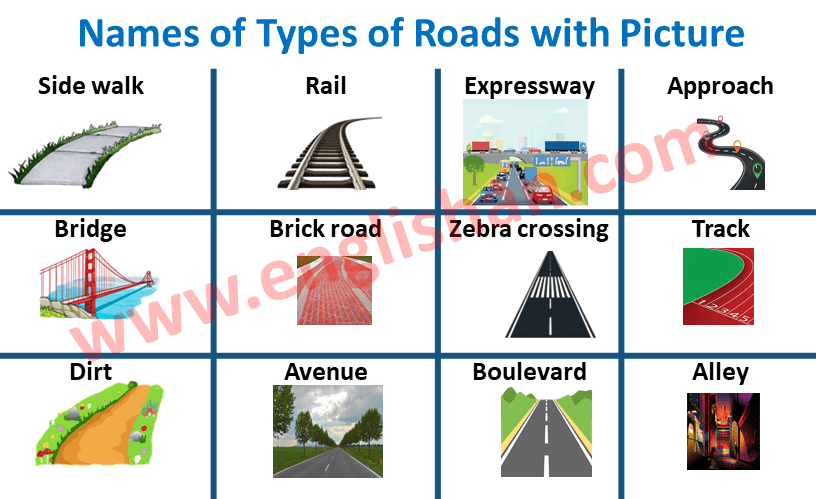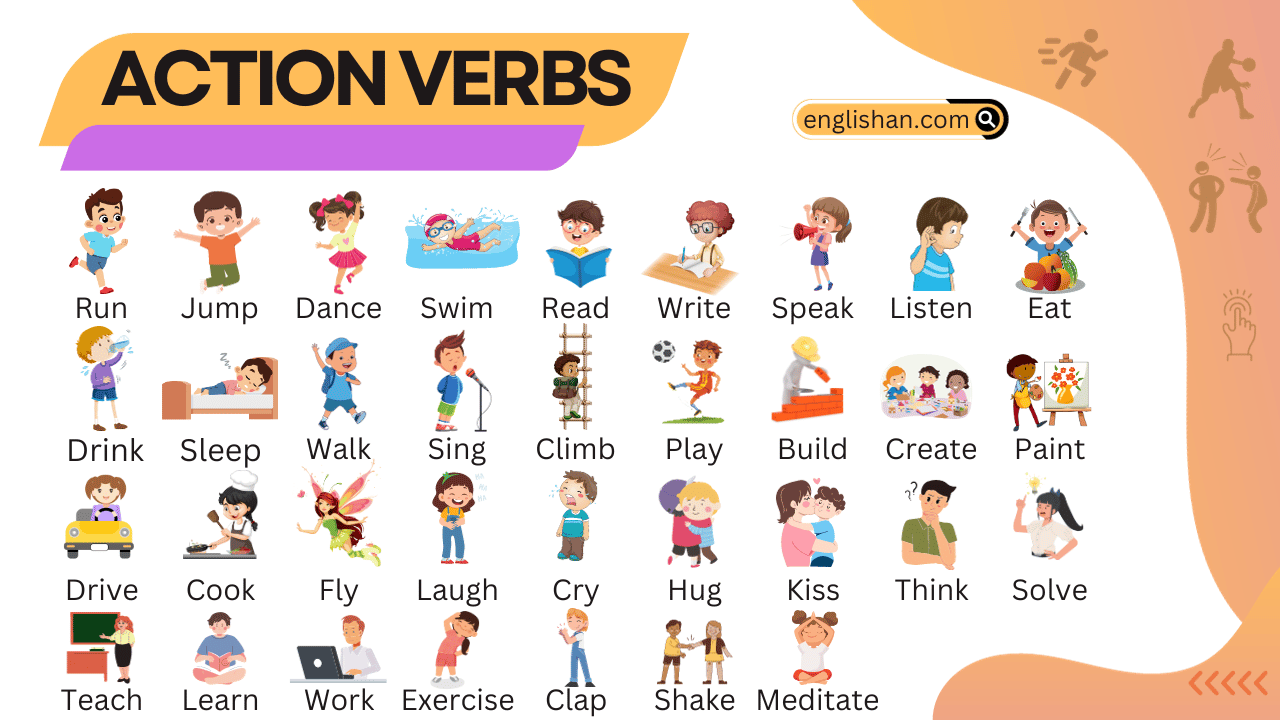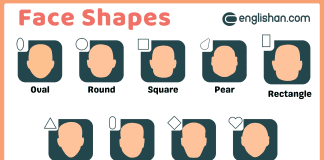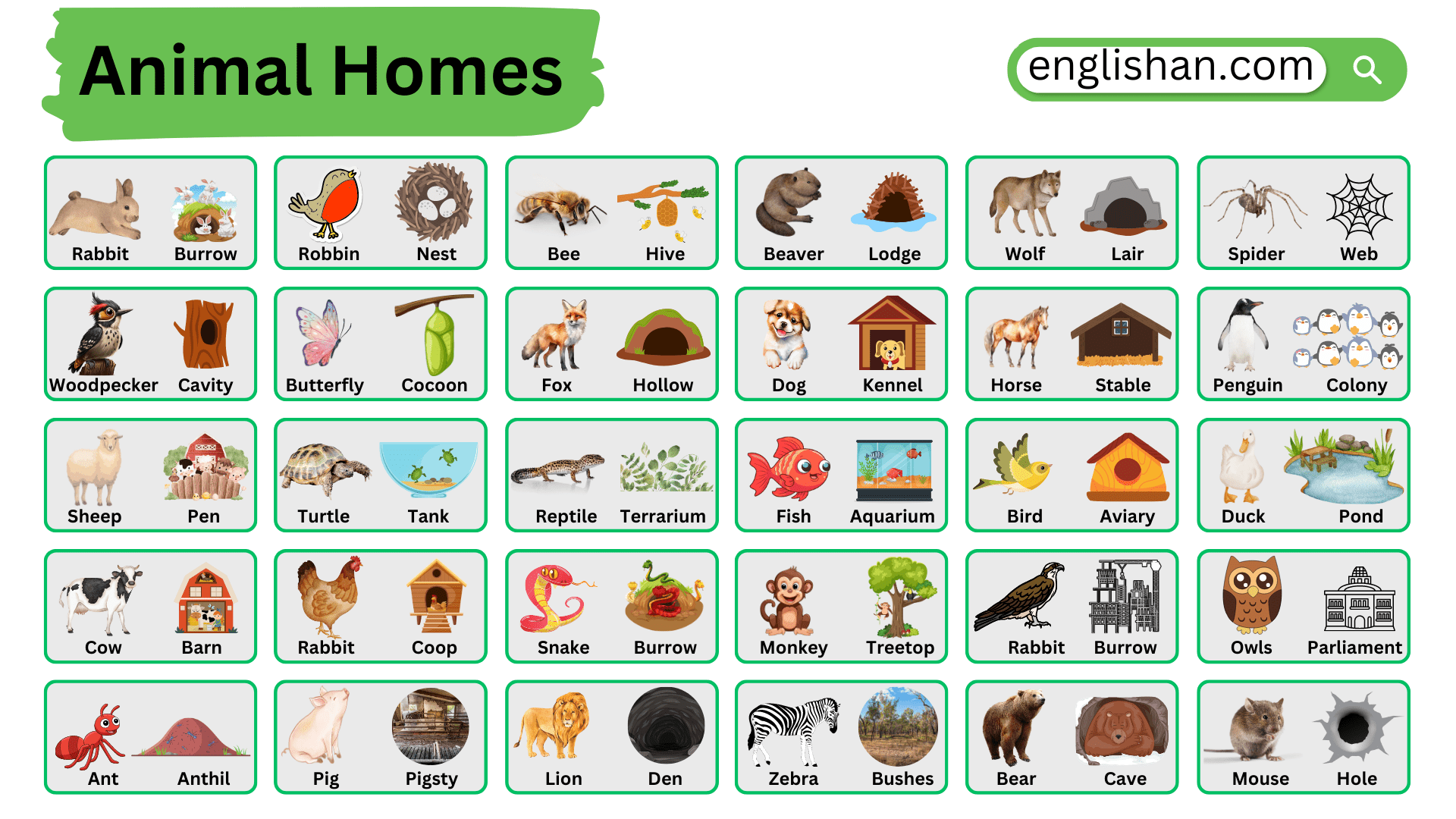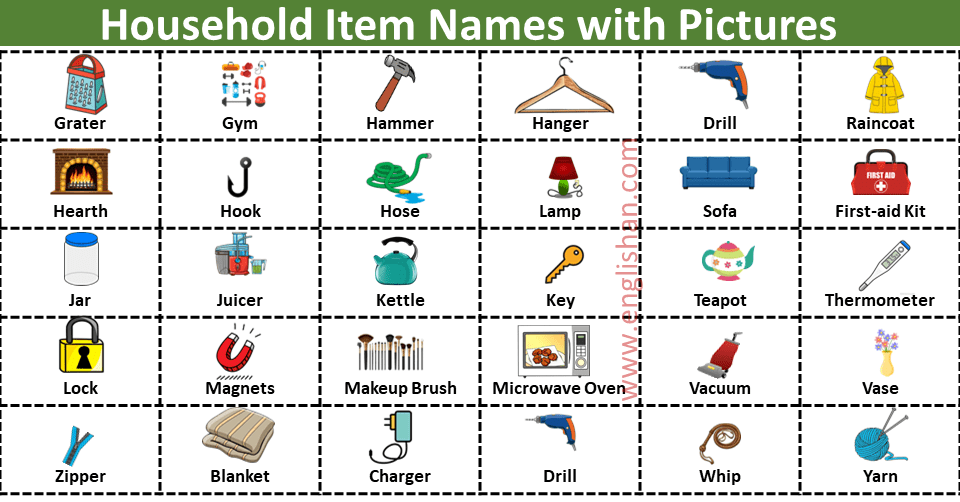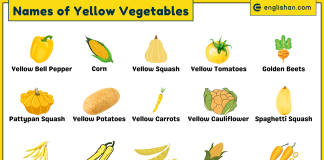Contents
Roads and paths are essential for transportation and connecting places. In this blog post, you will learn about different types of roads and paths, along with pictures to help you understand their uses and features. This knowledge will improve your vocabulary and make it easier to describe various routes in English.
To learn more vocabulary on different topics, visit our vocabulary category.
Types of Roads
Approach

A path or road that leads to a place
A one-way

A street in which cars may travel in one direction/in both directions
Avenue

A wide straight road, especially one with trees on each side
Dirt

Road a road or track with a rough or loose surface
Boulevard

A wide road in a town or city, often with trees along it
Causeway

A raised road or path across ground that is wet or is sometimes covered by water
Highway

A wide road built for fast travel between towns and cities
Lane

A narrow road, especially in the countryside
Overpass

A flyover
Turn

A turning
Street

A public road in a city, town, or village, typically with houses and buildings on one or both sides.
Rail

A bar of rolled steel forming a track for wheeled vehicles
Brick road

Road cover by brick
Express away

A high-speed divided highway for through traffic with access partially or fully controlled
Side walk

A usually paved walk for pedestrians at the side of a street
Bridge
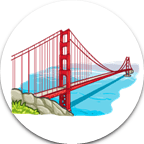
A structure carrying a pathway or roadway over a depression or obstacle
Zebra crossing
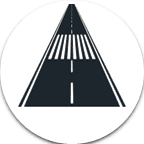
A crosswalk marked by a series of broad white stripes to indicate a crossing point at which pedestrians have the right of way
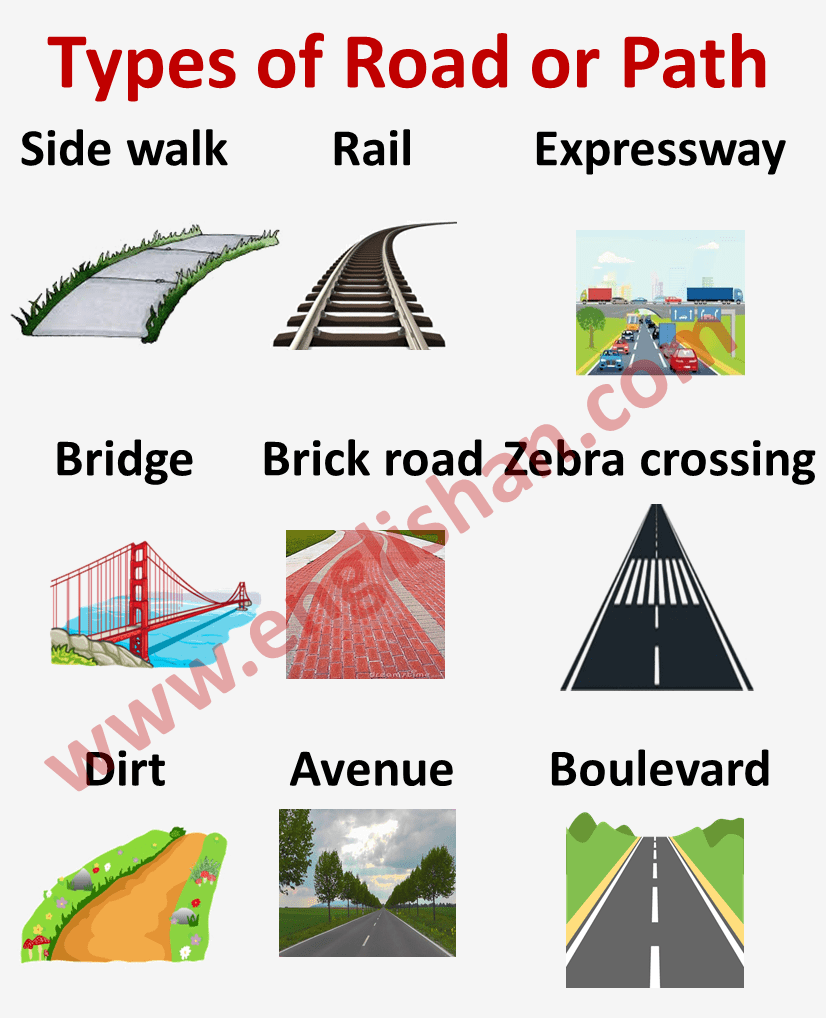
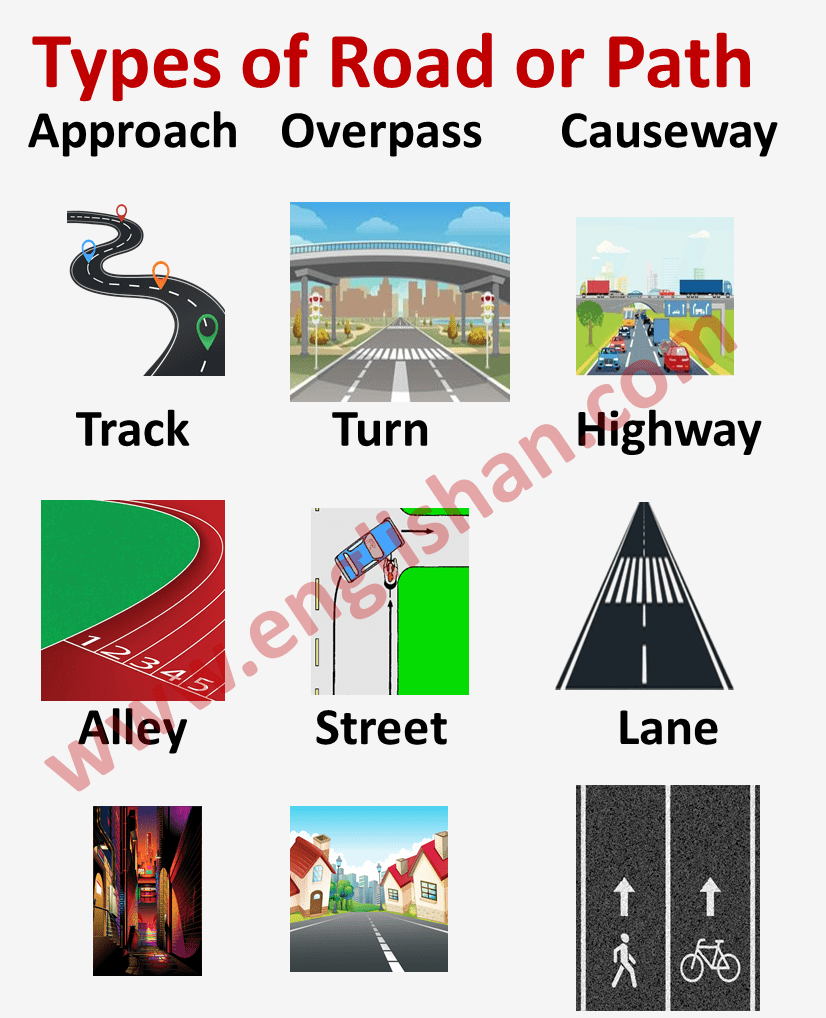
FAQs
A road or path is a way people, animals, or vehicles use to get from one place to another.
Roads are wide and usually made for cars and trucks.
Paths are smaller and often used for walking or biking.
They help make traveling easier.
The best types of roads depend on how you use them:
1. Highways: For traveling far and fast.
2. Roads: For driving in towns and cities.
3. Country Roads: For peaceful drives in quiet areas.
4. Bike Paths: For riding bikes safely.
5. Walking Paths: For walking or running.
Each road is good for different activities.
A road or path can be called by different names depending on its use:
1. Road: A wide way for cars and trucks.
2. Path: A small trail for walking or biking.
3. Street: A road in a town or city.
4. Highway: A big road for fast travel.
5. Trail: A natural path, often in forests or parks.
These names describe different types of roads or paths!
In Pakistan, there are different types of roads:
National Highways: Connect big cities and provinces.
Motorways: Fast roads for long travel, like the M-1 and M-2.
Provincial Roads: Link smaller cities and towns.
City Roads: Roads inside towns and cities.
Rural Roads: Small roads in villages.
Expressways: Fast roads for key areas, like the Islamabad Expressway.
These roads help people travel easily across the country.
You May Also Like
